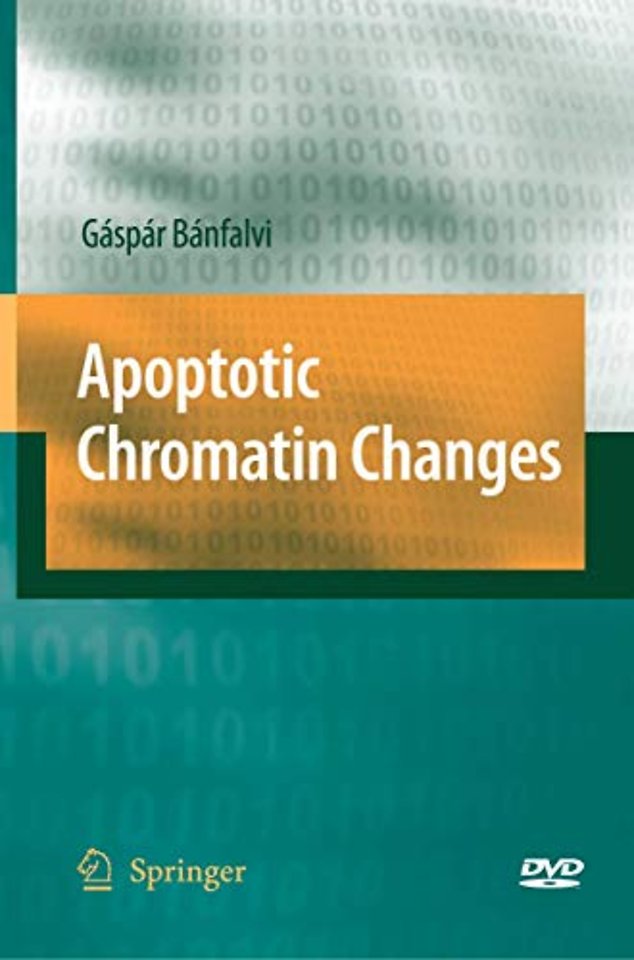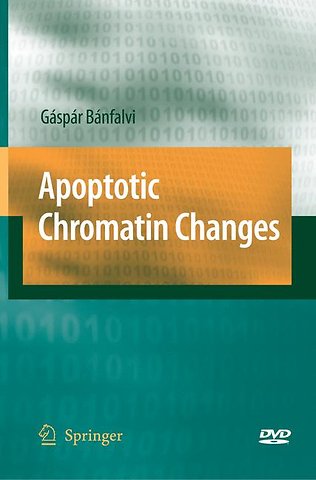Apoptotic Chromatin Changes
Samenvatting
The writing of this book is based on: 1. earlier experience writing textbooks for biology students with a university-level background in biology and biochemistry with many (>200) ?gures in these books (in Hungarian), 2. and on the necessity to present university lectures as power point presentations to catch the interest of s- dents. The author realizes that young readers who were grown up in an information society are relactant to read too much unless they have to take exams. Even then they prefer books which contain illustrations for a better understanding. In collaboration with colleagues, referees and members of the publishing staff an extensive set of photographs and illustrations were collected to provide a graphic follow-up to the text. Further aids for the student, instructor and the curious reader are provided by summaries, extensive sets of readings and references for each chapter, a glossary of the terms, list of abbreviations and a DVD with a red-blue eyeglass to visualize three dimensional chromatin structures. The reader could ask: Why another book on apoptosis? The answer to the question is related to the de?nition of the process. The term apoptosis has been introduced to describe typical morphological changes leading to controlled se- destruction of cells. The ?rst demonstrated biochemical feature of this type of cell death was internucleosomal fragmentation, which was occasionally preceded by the generation of large DNA fragments.
Specificaties
Inhoudsopgave
Summary
Historical events leading to the recognition of core processes of genetic information
RNA World
Pre-RNA World
Additional arguments supporting the RNA World hypothesis
Basic principles of the transfer of genetic information
Core information processes belonging to the DNA Empire
When did DNA evolve?
Molecular oxygen serving the transition from RNA World to DNA Empire
Saturation of seawater with oxygen and development of oxygen atmosphere
Advantage of oxygen production
Oxygen the Janus faced molecule
Protection of anaerobes from oxygen toxicity
Free radical formation during the synthesis of deoxyribonucleotides
Cellular responses to DNA damage
Conceptual changes in gene stability
Primary information on cytotoxicity obtained at DNA level
Detection of genotoxic changes at the structural level of DNA
Enzymatic detection of cellular lesions: too late
Early detection of cytotoxicity: at DNA level
Conclusions
References
II. STRUCTURAL ORGANIZATION OF DNA
Summary
Building blocks of nucleic acids
Structure of nucleotides
Nucleic acid bases
Types
Aromatic character, planar structure of nucleic acid bases
Free nucleic acid bases
Light absorption
Apolar interactions
Hypochrome, hyperchrome effect
Major, minor and rare bases
Base analogues
Antimetabolites
Sugar component of nucleotides
Why ribose was selected as the sugar component of nucleic acids
Criteria for sugar selection
Phosphate as nucleotide component
Bond types in nucleotides
Nomenclature of bases, nucleosides and nucleotides
Metabolism of nucleotides
De novo biosynthesis
Basic conception of biosynthesis
Ribonucleotide biosynthesis
Deoxyribonucleotide biosynthesis
dNDP--dNTP conversion
dUMP formation
Thymidilate formation (dUMP--dTMP)
Regulation of nucleotide biosynthesis
Degradation of nucleotides
Biosynthesis of coenzymes
Tissue specific purine synthesis
Function of nucleotides
DNA structure
Structural levels of DNA
Primary structure of DNA
Secondary DNA structures
H-bonds
B-DNA
A-DNA
Z-DNA
Cruciform DNA
Bent DNA structures
Transition from right-handed to left-handed DNA
Tetraplex (quadruplex) DNA
Differences in the structure of DNA and RNA
Tertiary structure of DNA (topology)
Thermodinamic aspects of supercoiling
Topoisomerases
Models of gyrase action
Sign inversion and torsional model of supercoiling
Rotating model of negative supercoiling
Topology of eukaryotic DNA
Nucleosome, the supercoil analogue in eukaryotes
Supranucleosomal (chromosomal) organization of DNA
Early chromatin models
Solenoid versus zig-zag model
Possible fibril arrangements
Hairpin model
Plectonemic model of chromatin condensation
Chromosomes of animal cells
Eukaryotic genome size and DNA compaction
Chromosome number
Metaphase chromosomes
Centromere and teleomere regions of chromosomes
Variation in DNA content, C-value paradox
Variation in chromosome number
Karyotype, chromosome size
Genetic linkage
Physical mapping
Sex chromosomes
Chromosomal aberrations
Genetic diversity
Eukaryotic cell cycle
Cytogenetics
Genes
Temporal and spatial order of gene replication
DNA is replicated and repaired in several subphases
References
III. CHROMATIN CONDENSATION
Summary
Importance of chromatin condensation
Active and inactive chromatin
Euchromatin and heterochromatin
Histone code hypothesis
Chromosome arrangement in the nucleus
Models of chromosome condensation
Chromatin folding in the interphase nucleus is poorly understood
Chromatin models
Review of methodologies
Methods to visualize chromosome condensation during the cell cycle
Centrifugal elutriation
Permeable cellsTe

